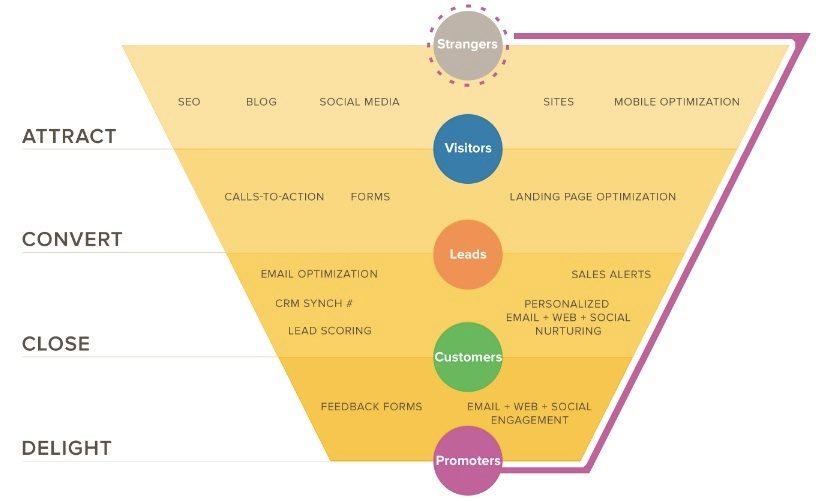To gate or not to gate your content. That is the question, and your success as a marketer might depend on it.
“Gating” refers to a premium piece of information on your website people can download when they submit some personal information (like an email address), allowing you to market to them in the future.Up until a few years ago, gating content was a no-brainer. We all spent lots of time and money creating whitepapers and ebooks, uploading them to our websites and locking them up behind a form that captures a name, email address, and phone number. All you had to do was promote the offer and wait for leads to start coming in.
Today people are not “opting-in” so easily. They know they can often get the same information somewhere else without subjecting themselves to another business spamming them on a weekly or daily basis.
Am I right? The playing field is more competitive now, and marketers are responding by pumping up their offers with hyperbole. Here’s a parody of the many posts I see on Facebook every day:
GET 10,000 EMAIL SUBSCRIBERS IN JUST TWO WEEKS!! IT CAN BE DONE. I’LL SHOW YOU HOW I TURNED MY START UP INTO A MILLION DOLLAR BUSINESS OVERNIGHT!
I gag every time I see garbage like that. Regardless of whether the content behind that ridiculous headline is any good – it fuels skepticism and makes my job that much harder. When landing pages start reading like a TV infomercial, we are all in trouble.
{{cta(’50e5349d-3be4-47d9-b390-17f18861c795′)}}
So, this is what we know right now: When new prospects see value in your gated content, you will generate leads, although that number is usually small. HubSpot calls a good conversion rate 20 percent, but I think that number is high for many businesses out there. I’m usually thrilled to see conversion rates north of 10 percent, but that’s just me.
The downside is that gating content limits traffic and SEO benefits you would otherwise get if it were free for all to see. It’s a trade-off either way, but if generating leads is your primary goal, there is more than one way to get the job done.
[Editorial note: This challenge strikes very close to home for us as well. You will notice that we offer gated content as well as “free-range” stuff on our website. We are always experimenting with different strategies and seeing what works, just like smart marketers should, and we encourage you to do the same.]
Give Away Your Top of Funnel Offers

Source: HubSpot
If you are a newbie on the content scene, you need eyeballs. And the best way to get them is by keeping your basic, 101-level content ungated and free for the world to see. Building trust with an audience takes time, so let’s not make it harder than it needs to be.
Go ahead and create your whitepaper about “How to Sharpen the Perfect Pencil,” but don’t leave it under lock and key. Instead, post the content on your blog and offer the gated pdf version as a download for anyone who wants a copy for future reference. You may not get a ton of conversions this way, but you can boost the percentage by pairing the pdf with some additional content people can’t find everywhere else.
Capture Leads With Tools People Can Use
If people are reluctant to download your whitepapers because they can find the same information on six different blogs, you need to get creative and offer them something they won’t find. For instance, try creating a worksheet people can use to put the information they just learned into practice.

One of our clients specializes in designing corporate websites that only employees can access – also known as intranets – and these platforms improve collaboration and document management within the organization. When we started working with them, the client’s website featured three whitepapers that had a conversion rate of approximately 3 or 4 percent.
While working on a piece of long-form content about “How to Plan an Intranet,” we created an Excel spreadsheet people could use to guide the planning process on their own. Within two months, this gated worksheet had a conversion rate of 11 percent. Still room for growth, for sure, but the lesson is clear:
Information is cheap to consumers, even the quality content we put our heart and soul into. Give people something they can use, then you’ve got something special.
In his best-selling book, Youtility, Jay Baer articulated the power of content marketing perfectly when he said “Stop trying to be amazing and start being useful.” We are now entering a new era where being useful means more than just offering great information. We have to show people how to use it.
I’ll give you another example. We recently created a keyword research template and offer it as gated content on our website. Now, I probably don’t need to tell you that mountains of content exist about keyword research already. What in the world could we possibly offer that people can’t get from a hundred other sites?
Written specifically for the IT industry, we compiled a list of best practices for keyword research and wrote up a blog post outlining the steps. Then, we created a worksheet people can use to fill in phrases from various sources discussed in the post. One tab features a “master list” that draws data from all the other tabs and auto-calculates the usefulness of each keyword, based on metrics the user filled out (search volume, bid cost, and difficulty for ranking).
With a little bit of creativity, you can build a tool that helps people put new things they’ve learned to good use, even when that subject has been covered ad nauseum on the Internet.
Add Value To Underperforming Offers
If gated content is the only way you can capture leads and people are not responding, you must assess the offer from the eyes of a customer. Is it worth giving your personal information for? Is this information easily found elsewhere on the web? Does my website have the credibility and social proof to convince people this download will truly help them?
Depending on the answers, you may need to spice up the offer with additional value to get results. Just make sure that whatever you add is useful, not fluff. Here are a few examples:
Kits – Package your whitepaper or ebook with a PowerPoint slide deck, tip sheets, templates and other materials that will help them put the material to good use.
Courses – Offer your whitepaper or video as the first installment in a series of online courses teaching people how to use your products.
Final Thoughts
If you are struggling to generate leads through gated content, don’t despair. The best results come after six to twelve months of consistent effort and it takes time to figure out what your audience responds to.
Listen to your customers as closely as you can, and stay focused on what they want and need. And for God’s sake, don’t make your offers sound like snake oil. Spare us all the promise that your ebook turn us into millionaires overnight. I’d rather take my time and do things right.
{{cta(‘dc4d14f6-e454-4e4d-a99f-f34e967a4d40’)}}


